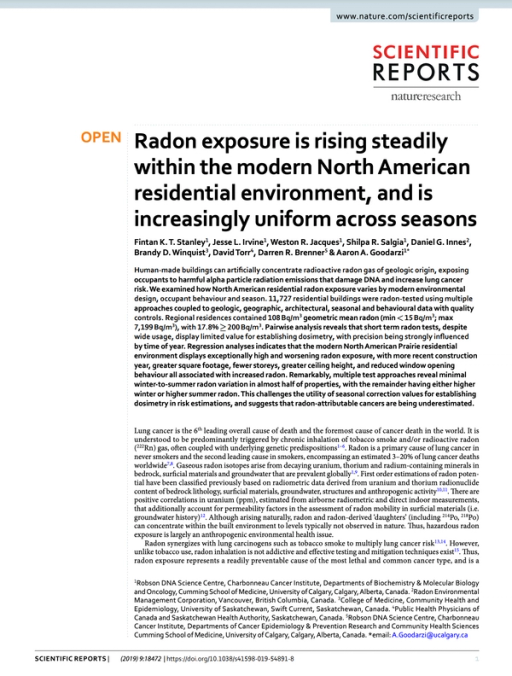Understanding Behavioural Environmental Design Contributors of High Radon Exposure to Protect Canadian Health
Canada contains many radon gas-generating regions and, because we have constructed population centres across all of them, radon is the primary cause of lung cancer in 10,000- 40,000 Canadians per decade. We have conducted detailed radon gas analysis of 11,000+ homes spread across Alberta and Saskatchewan, finding that 1 in 6 contain hazardous amounts of radon with newer homes in many regions (but not all) having much higher total radon. We have revealed an unknown “X factor” within environmental design practice across regions that is a major contributor to radon exposure, and our goal now is to understand this and develop solutions to protect the population. We aim to (i) identify modifiable behaviors and environmental design practices influencing chronic radon exposure in our changing world and (ii) define engineering and community intervention solutions applicable within the Canadian context to eliminate radon as a source of cancer in the future.
Amount Funded
$500,000
Year Funded
2018
Funding Priority
Built Environment: Understand and improve the sustainability and livability of the physical and social aspects of our human-made environment.
Topic
Contributor

University of Calgary, Cumming School of Medicine
At the Cumming School of Medicine, we don't wait for change, we make change — with our thriving three-year medical program that attracts the brightest students, faculty and staff and through innovative discovery research and testing of new medical treatments that improve patient care at home and around the world.
Resource
Similar Projects




